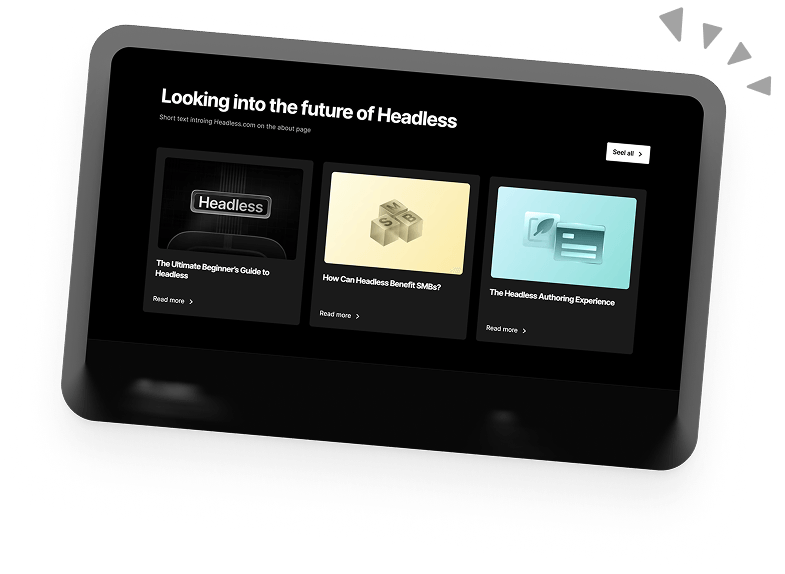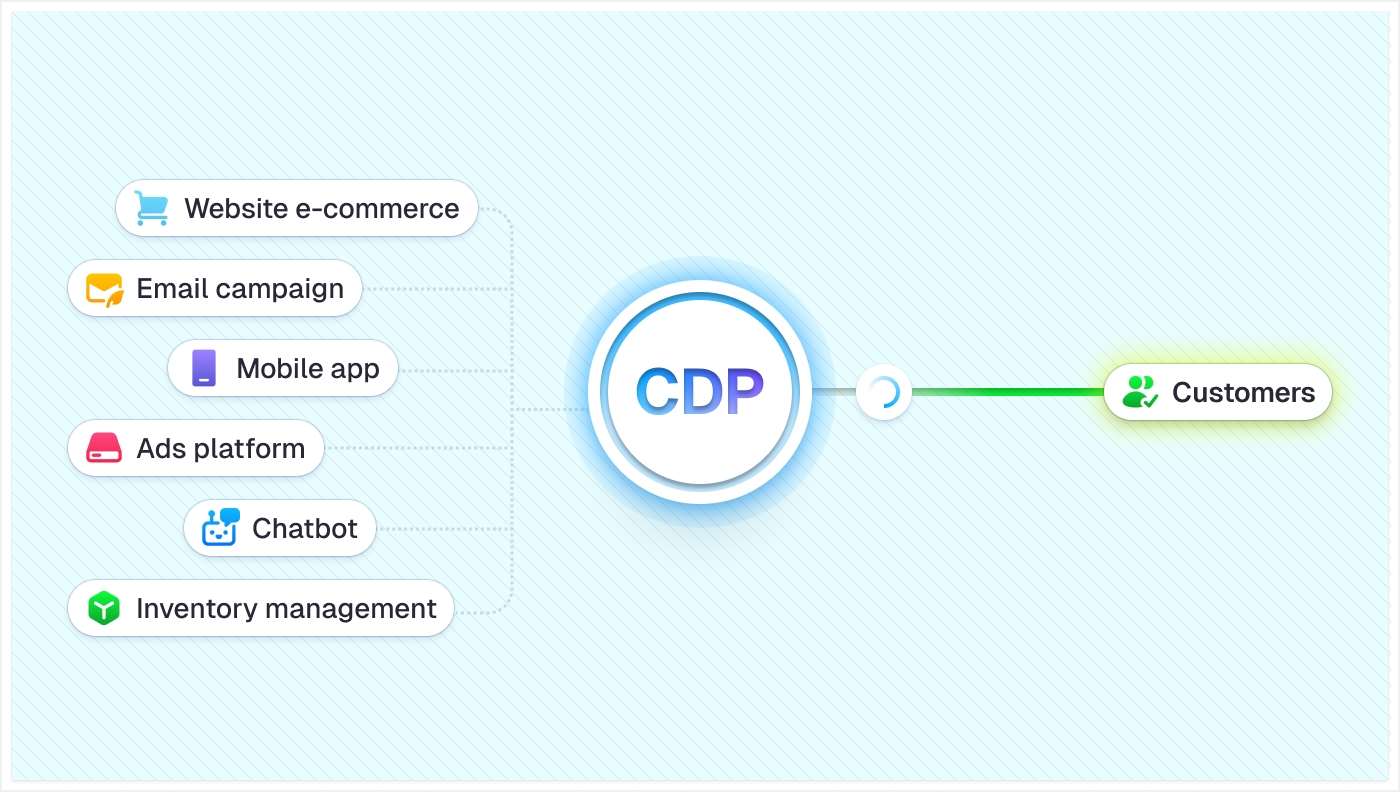Transforming Ecommerce Personalisation with CDPs
In the world of ecommerce personalisation, Customer Data Platforms (CDPs) are revolutionary tools. Companies are competing more and more on the basis of their customer experiences and, from the customer’s perspective, some degree of personalisation is the rule rather than the exception. Under these conditions, a CDP’s ability to provide a detailed understanding of the customer makes it a truly invaluable tool.
In this article, we’ll be having a look at the many ways CDPs can drastically transform ecommerce personalisation capabilities.

Understanding Ecommerce CDPs
A Customer Data Platform (CDP) is designed to provide an in-depth understanding of customers by consolidating all your customer data into one place. Whether that’s data from your CMS, analytics solutions, loyalty platforms, or customer service interactions, a CDP merges it all into a 360-degree view of your customers. It’s like the central nervous system of your business.
A CDP helps deal with two massive challenges that ecommerce companies face::
- Fragmented data spread across multiple systems
- Needing to evolve their personalisation capabilities
CDPs solve these issues by acting as a unified customer database, providing a single source of truth for brands to utilise. This centralised approach not only makes data management more efficient but also enhances the ability to deliver personalised experiences.
Along with building customer profiles, CDPs allow businesses to use real-time data orchestration to create dynamic customer journeys. For example, you could use real-time data to recommend products based on browsing history or sending personalised emails triggered by specific customer actions.

How Ecommerce CDPs Enhance personalisation
With 81% of customers wanting companies to offer personalised experiences, personalisation is no longer a luxury, but a necessity.
This is where CDPs come in. With advanced insights and a birds-eye view of customers, they give you access to a whole new world of personalisation possibilities.
Predictive Analysis to identify trends and opportunities
The strategic data overview of a CDP makes it easier to spot trends in customer behaviour. And, with AI and machine learning integrations, a CDP can use customer data to predict upcoming trends and opportunities.
For example, it could spot behavioural patterns that indicate a customer’s likelihood to purchase or churn, as well as identifying opportunities for cross-selling and upselling. Not only that, but a CDP can also help with managing inventory. By analysing purchasing trends and behavioural indicators, it can predict demand for products and ensure the inventory is stocked up in preparation.
Omnichannel Marketing
As a platform that unifies data from many different channels, CDPs are a natural fit for omnichannel marketing strategies.
Building a customer profile with data from all available touchpoints allows for consistent personalisation across all your marketing channels. For example, if a customer spends more time perusing a particular product category, they could receive emails about discounts or new arrivals in that category, as well as personalised product recommendations and tailored ads.
And, for a truly omnichannel ecommerce experience, CDPs can also help unify online and brick-and-mortar stores. By combining data from both online and offline touchpoints, companies can create personalisation that transitions seamlessly between digital and physical customer experiences.
Automated Workflows
Integrating CDPs into your tech stack allows for more dynamic personalisation through the use of automated workflows. Combining comprehensive data with automation means you can create automated tasks (such as emails, SMS messages, app notifications) that are triggered by specific customer behaviours.
The obvious use case for this is cart abandonment: where an abandoned cart would trigger an email or notification encouraging the customer to complete their purchase. Using customer segments and profiles, you can have distinct cart abandonment messages targeting different user segments. For example, you might use a different approach for a first-time shopper versus a regular customer.
Single source of truth
By unifying data streams, Customer Data Platforms give you a single source of truth. Everything you need to know about your customers is all in one place. This means no more uncertainty or confusion from siloed data. You get the peace of mind of having all your teams working from a single, centralised information source and, as a result you can act with confidence, making deliberate decisions with your personalisation and marketing.
Ecommerce CDP Case Studies
“Now that’s all very lovely in theory. But what about real-world applications?”
Great question. Let’s take a look at some examples of ecommerce CDPs in action.
Lucky Brand

Challenge: American clothing company Lucky Brand were struggling with siloed customer data. They had 12.7 million records spread across 4 different data siloes. They wanted a way to amalgamate this data in order to improve their customer experience capabilities.
Solution: Implementing a CDP allowed them to merge customer records from the different data streams and build accurate customer profiles.
Results: As a result, they uncovered 1.5 million previously unknown customers that had been lost in the system.
Ledbury

Challenge: After opening more stores across America, Ledbury wanted to learn how they could tailor their customer experiences to match customer needs in each location. Additionally, they wanted to create consistent, personalised experiences that combined online and in-store data.
Solution: Working with Ometria, Ledbury was able to implement highly personalised email marketing campaigns that merged online and offline customer experiences.
Results:
- +55% increase in orders from returning customers
- +50% open rate from subscribers
- +27% increased revenue
Brooks Running

Challenge: Brooks Running wanted to create a comprehensive and unified view of their customers but were hindered by data siloes.
Solution: Using Amperity, Brooks collated their customer data and used it to create precise segmentation and personalised journeys. Additionally, their integration with ZenDesk meant that customer service agents could quickly access relevant information about customers and have more personalised, effective conversations.
Results:
- +260% CTR in paid search
- +150% avg increase in paid social engagement metrics
- +128% return on ad spend
- +2.4x Email open rate
Conclusion
Customer Data Platforms are continuously evolving, bringing with them new possibilities for dynamic, hyper-personalised experiences. And, in a world where customer experience is a defining factor for success, a CDP’s precise and detailed data insights offer a major competitive advantage. By leveraging data-driven personalisation you can not only meet today’s standards, but also future-proof your ecommerce strategy to keep pace with the evolution of customer experiences.
Book a 30-min Introduction Call
Let's jump on a quick intro call We'll break down your project, and pinpoint exactly how we can help.



Our clients  Holaa! love working with us see their stories below!
Holaa! love working with us see their stories below!






